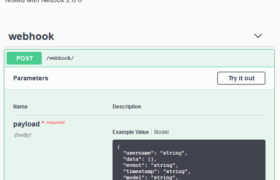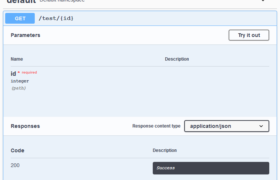LDAP authentication problem in the customer environment: The error message was received right after entering the password. Tshark says: 1 0.000000000 192.168.99.200 → 10.10.10.10 TCP 74 44780 → 3269 [SYN] Seq=0 Win=64240 Len=0 MSS=1460 SACK_PERM=1 TSval=2891116193 TSecr=0 WS=128 2 0.001225814 10.10.10.10 → 192.168.99.200 TCP 74 3269 → 44780 [SYN, ACK] Seq=0 Ack=1 Win=8192 Len=0 MSS=1460 […]
How to Decrypt TLS Traffic with Wireshark
This is a small note to keep the links to posts by Peter Wu: Extract pre-master keys from an OpenSSL application Extracting openssl pre-master secret from apache2 Example in Debian Buster: With the keys saved by that process (and doing the packet capture at the same time, in either server or client side), you can […]
High Availability Clustering with Zabbix on Debian
Later in this document: Setting up the database servers Setting up the Zabbix servers Setting up the frontend (web) servers Edmunds Vesmanis had a presentation in Zabbix Summit 2019 about Zabbix HA setups (video in Youtube), and he also wrote a post in Zabbix blog titled High Availability cluster building with Zabbix for continued service: […]
Configuring MariaDB Replication
This is a plain list of actions I did when creating a MariaDB database master-slave replication setup. It is assumed that you already know why you want to create such a configuration and how you can use it in your case. Some links anyway: Global Transaction ID (mariadb.com): “[…] it is generally recommended to use […]
NetBox Database Backup
A short memo how to backup any PostgreSQL database: In .pgpass (you should keep this file protected): netbox-db-backup.sh: That will also find and delete backup files older than MAXDAYS.
The Bugs in iPadOS 13.2.2
These are currently the most annoying bugs in iPadOS 13.2.2. The device here is iPad Pro 12.9″ (2nd gen). The Screen Rotation Does Not Work Seamlessly That is an example what frequently happens. This time the quick start bar (whatever is the correct term) did not rotate even though the icons and the background image […]
Get Linux Distribution Name and Version with Python
Since Debian 10 Buster there is no minor version number in lsb_release output or /etc/os-release anymore. Bug has been filed, but apparently there is no will to get the full version number back. The dist() and linux_distribution() functions in the platform module in Python have been deprecated in 3.5 and removed in 3.8.0: Also, the […]
Even Better Webhook Listener
I made some improvements to the NetBox webhook listener presented in my earlier post. Here is the new one: Example from the log file: Notable changes: Added the message digest verification (X-Hook-Signature header sent by NetBox) Added content length checking as an example of all the worries you need to take care of when publishing […]
Webhook Listener for NetBox
Note: There is an improved version in the next post. Following my earlier post about implementing a REST API, here is a simple listener for NetBox webhooks: webhook-listener.py: With the other configurations described in the earlier post (and after configured NetBox to send the webhook POST requests to http://my.server.local/webhook/), these are the outputs: webhook-listener.log: Automatically […]
My First REST API with Python and Flask-RESTPlus
With few or no explanations, on Debian 10: The actual API app, in ~/resttest/resttest.py: ~/resttest/wsgi.py: /etc/systemd/system/resttest.service: /etc/nginx/sites-available/resttest: Final setup steps: Testing results: Also note that the Swagger UI is automatically accessible in http://my.server.name/: Some future considerations: TLS encryption (= reconfiguring NGINX) Authentication for the API Disabling/customizing the Swagger UI Links: Flask Flask-RESTPlus NGINX The post […]

